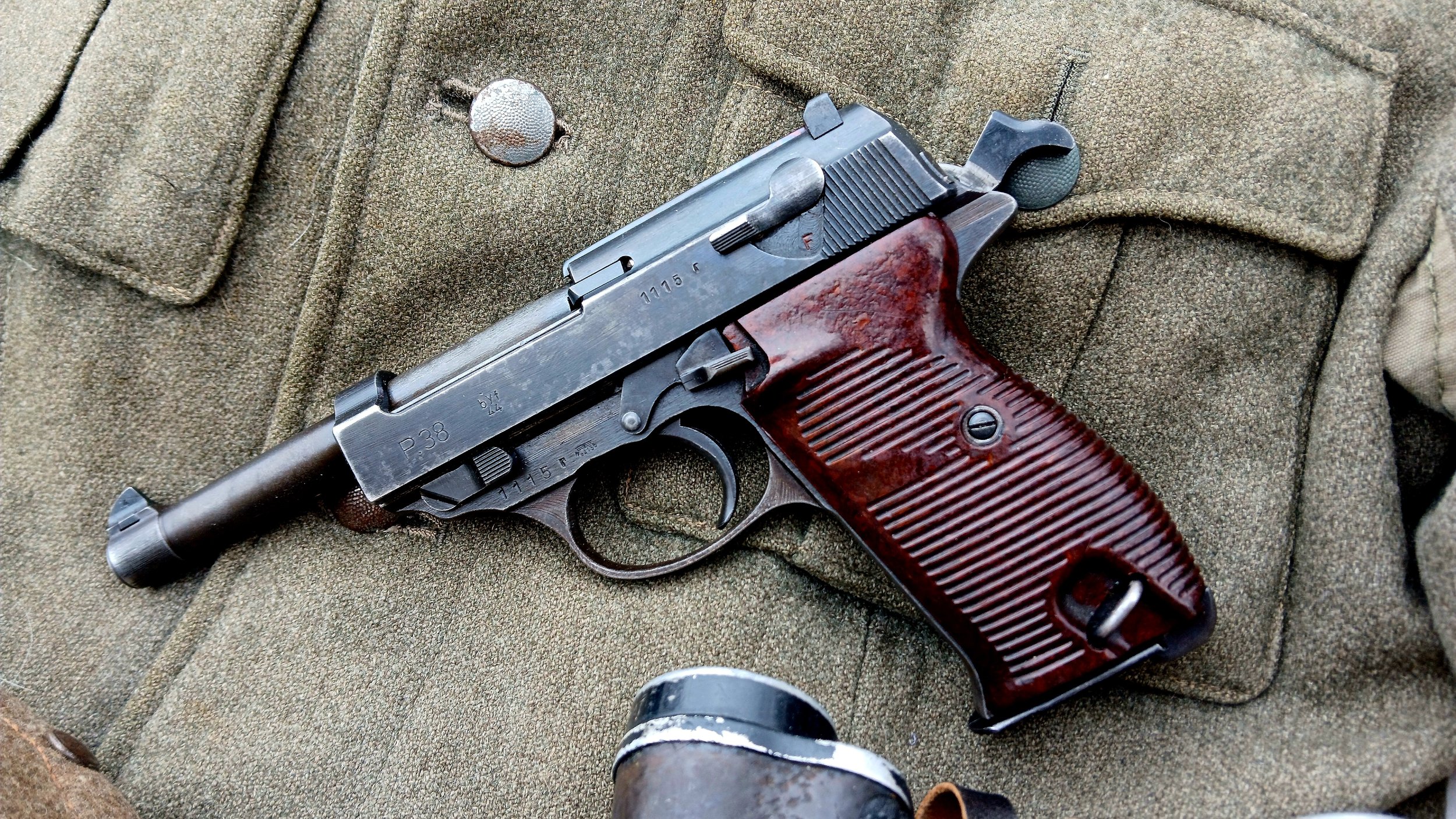
December, 2025
Walter P.38
German Reich
Second World War
Made by Mauser in 1944
9x19mm Parabellum
Categories
Walther P.38
Possibly the best overall handgun in service during the Second World War, Walther’s P.38 was an advanced design, although it was never able to eclipse the older Luger P.08 in the popular imagination.
Replica: Nambu Type 100
Demonstrating a general lack of interest in such a weapon until the very eve of the Second World War, Japan’s only domestic submachine gun would service in relatively miniscule numbers compared to its contemporaries amongst the other major nations of the conflict.
Mosin Nagant M91/30
With the turmoil of revolution behind the newly formed USSR, Stalin’s regime turned to modernization of the nation’s armed forces concurrently to the industrialization of the country.
SACM Mle1935A
Following a wholesale modernization program in the later interwar period, the French adopted a new handgun just in time for the Second World War.
M1917 Enfield
When the United States finally entered the Great War in 1917 it found itself facing a significant shortage of modern rifles, and turned to a foreign design already in mass production domestically.
Chinese Contract Kar98k
The end of a decades-long partnership between German arms manufacturers and China was a small lot of Kar98k Mauser rifles sent to Chiang Kai-Shek’s armies in the late 1930s.
Enfield No2 Mk1*
In the lead-up to the Second World War attempts by British government arsenals to make a cheaper alternative to the commercial Webley revolver that would meet with limited success.
Gewehr 88/05
Germany’s first smokeless powder design was not without its problems, but still found itself a prolific presence on the battlefields of the Great War.
Type 97 Arisaka
The standard sniper’s rifle of the Imperial Japanese military in the Second World War was a relatively unimpressive creation, being little more than a standard Type 38 rifle fitted with a scope.
Carcano M38/91
Despite attempts to replace the 6.5mm cartridge that had been deemed obsolete after the Great War, the improved short rifle pattern of the Carcano rifle would service as the official standard issue of the Regio Esercito in the Second World War.
Springfield Model 1866
In the aftermath of the bloody Civil War the newly reunified United States found itself needing to adopt a modern breechloading cartridge arm, and began to explore a solution using the surplus of rifled muskets left over from the conflict.
Replica: Mauser M712 Schnellfeuer
The Mauser C96 had been one of the first successful autoloading handguns introduced, and had served around the world before, during and after the Great War. In the interwar period Spanish copies proliferated, including a popular select fire model, prompting a German response.
Spanish Mauser M1893
A major step in the evolution of Paul Mauser’s iconic series of military rifles, the M1893 would be the final arm of Imperial Spain as well the inspiration behind an American icon.
Lee Enfield SMLE MkIII*
Despite initially looking to replace the entire system after the Boer War, the British Short, Magazine, Lee Enfield really came into its own during the Great War, cementing itself as one of the most iconic weapons of the conflict.
Steyr Hahn M1912
The standard issue sidearm of the Austrian half of the Hapsburg Empire’s forces in the Great War was a solid if eclectic handgun that would prove cable in locals such as the Balkans, Eastern Front and Italian Alps.
Mossberg M44US
Faced with a rapidly expanding military and a need to conserve primary small arms for the front lines, the US would turn to a simple but effective bolt action trainer in .22 Long Rifle.
Type 38 Arisaka
Problems with Japan’s first smokeless powder rifle prompted a redesign of the mechanism, leading to one of the strongest and simplest rifles ever produced, which would serve the Empire for almost half a century.
Mle. 1892 “Lebel” Revolver
The first smokeless powder handgun adopted by France was an interesting revolver designed with cavalry in mind, but would serve on long after the demise of the horse soldier.
Included at the end of each posting is a reference to the rarity and average price observed by the author. This is, or course, subjective, and results may vary depending on a variety of factors, including condition, certain markings, etc., while rarity may vary depending on time and location.
Rarity is marked on a scale as follows:
Production (currently produced)
Surplus (Currently available on the surplus market)
Common
Uncommon
Rare
Very Rare



















